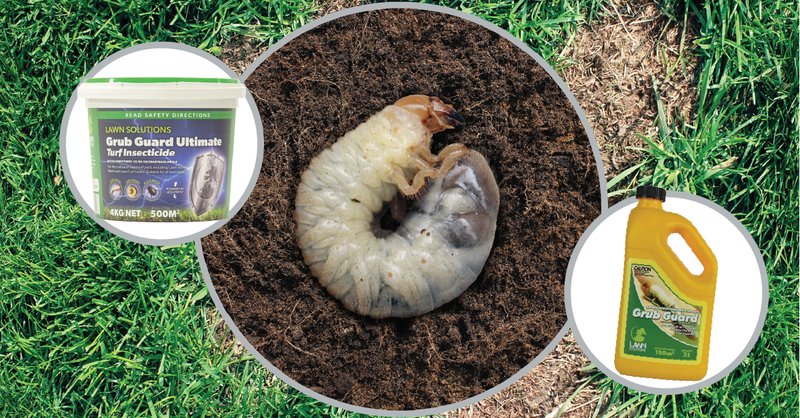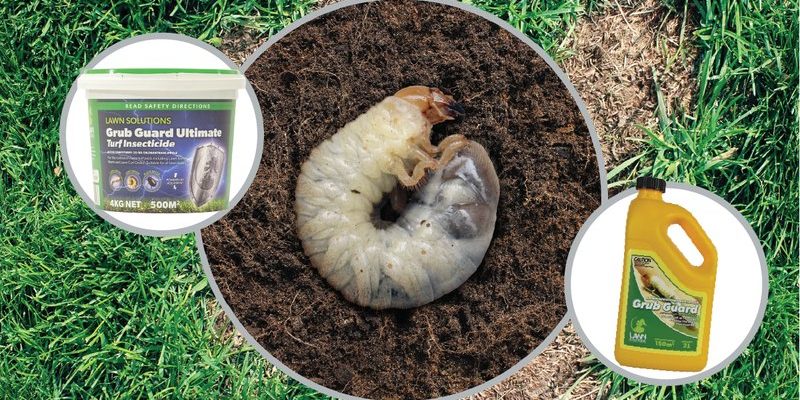
Think of your lawn like a sponge. It needs air, water, and nutrients to thrive, just like you need good food and fresh air. Aeration helps create those essential pathways for your lawn to breathe—making it harder for grubs to settle in and take over. By introducing this practice into your lawn care routine, you’re not only keeping your grass healthy but also dramatically reducing the chances of those unwanted pests moving in.
So, let’s dive deeper into how aeration works and why it’s a game-changer for keeping grub worms at bay.
What Are Grub Worms, Anyway?
Grub worms are the larval stage of beetles, most commonly the **Japanese beetle**. These little pests live underground, munching on the roots of your grass. You might not see them until they’ve made a serious mess of your lawn, and by then, the damage can be extensive.
You might be wondering, “How do I even know if I have grubs?” One sure sign is brown patches in your lawn that seem to be wilting. If you pull on the grass and it comes up with little resistance, you might just have a grub issue lurking beneath the surface. Understanding what these pests are and how they operate is the first step in protecting your yard.
The Role of Lawn Aeration
Aeration involves perforating the soil with holes to allow air, water, and nutrients to penetrate down to the roots. This process can benefit your lawn in several ways, enhancing its overall health and resilience. You might think of it as a spa day for your grass—it opens up the soil and lets your lawn breathe.
When your soil is compacted, it can create the perfect environment for grubs to thrive. Aeration breaks up compacted soil, making it harder for grubs to establish themselves. Typically, those little pests prefer areas with tightly packed soil, so giving your lawn some breathing room can be an effective strategy against them.
When to Aerate Your Lawn
Timing can be crucial when it comes to lawn aeration. The best time to aerate your lawn generally depends on your climate and the type of grass you have. For cool-season grasses, the ideal times are in the early spring or fall. Warmer climates may require summer aeration; however, it’s best to avoid doing this during extreme heat, as the stress on your lawn can be too much.
You might also want to consider the moisture level of the soil. If it’s too dry, it can be challenging to aerate effectively. Check the forecast, and make sure the soil is moist but not soggy before you get started.
How to Aerate Your Lawn
Aerating your lawn doesn’t have to be a stressful task. Here’s a simple step-by-step guide:
- Step 1: Mow your lawn to a shorter length. This makes it easier for the aerator to do its job.
- Step 2: Water your lawn a day before aerating. Soil that’s moist but not wet will yield better results.
- Step 3: Use a core aerator. This tool pulls out small plugs of soil, allowing for better air circulation.
- Step 4: Apply a top dressing of compost or fertilizer to help the lawn recover and thrive post-aeration.
Honestly, you can rent an aerator from a local garden center if you don’t want to commit to buying one. They’re relatively easy to use and can make a huge difference in your lawn’s health.
Other Preventive Measures Against Grub Infestations
While aeration is crucial, it isn’t the only weapon in your anti-grub arsenal. Here are some additional strategies to consider:
- Regular Lawn Maintenance: Keep your lawn mowed and watered properly. Healthy grass can outcompete weeds and pests.
- Beneficial Nematodes: These microscopic creatures can help control grub populations naturally.
- Consider Beneficial Insects: Ladybugs and other insects can help reduce grub numbers by preying on them.
Each of these methods can help reinforce the efforts you’re making with aeration. The more you take care of your lawn, the less likely it is that grubs will find it inviting.
Signs That Aeration Is Working
After aerating your lawn, you’ll want to keep an eye out for signs that it’s making a positive impact. Here are a few to look for:
- Thicker Grass: Your grass should start to grow healthier and more robust.
- Improved Drainage: Water should soak into the soil more efficiently.
- Fewer Weeds: Aeration can help your lawn outcompete weeds, leading to a healthier overall appearance.
You might notice these changes within a few weeks of aerating. If your lawn looks vibrant and green, you can feel confident that you’re on the right track to keeping grub worms at bay.
Preventing grub worm infestations is all about maintaining a healthy lawn, and lawn aeration is a fantastic way to kickstart that process. By creating airflow in the soil, providing nutrients, and keeping pests like grubs from feeling at home, you set the stage for a beautiful yard.
So, grab that aerator, roll up your sleeves, and give your lawn the care it deserves. With a little effort, you’ll not only enjoy a lush, green space but also keep those pesky grubs far away. Remember, a happy lawn means a happy you!

